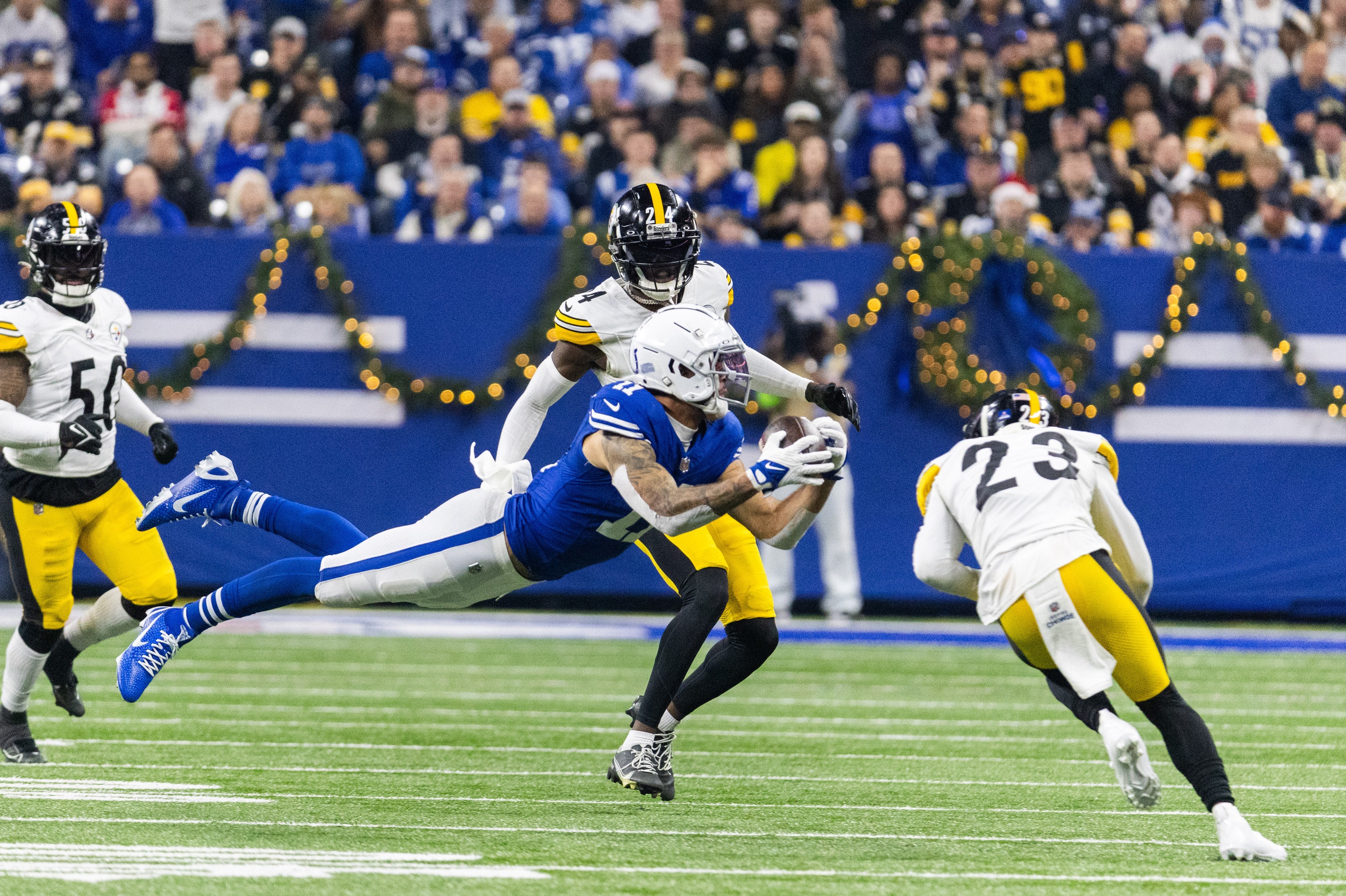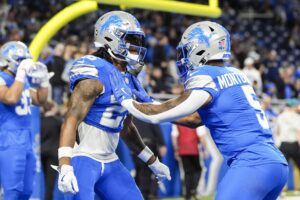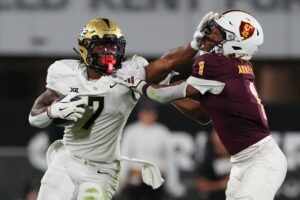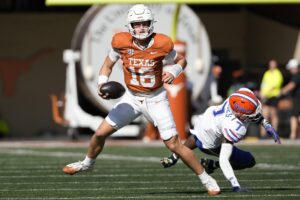The NFL’s competition committee met on Sunday prior to the 2024 NFL Combine with news emerging that some rule changes, including changes to the kickoff may be on the horizon. A booming kick with a returner standing at the goal line, arms outstretched indicating there is no chance of a return has become an all too familiar sight. A commercial break may follow with fans seeing nothing of significance take place for what feels like far too long.
The kickoff is a key aspect of the sport and provides one of the most exciting plays in the game. With the recent election of legendary returner Devin Hester to the Hall of Fame, the NFL continues to search for ways to improve player safety without detracting from the fan experience. The Committee has discussed changing the kickoff to an XFL-style play, which will hopefully see more than 1.1 kickoffs per game returned as was the case in 2023.
Given that the Committee is looking at rule changes, here is an analysis of three more topics where the league may consider rule changes.
3 Potential NFL Rule Changes
Overtime Rules
In the wake of Super Bowl 58, some 49ers players admitted their lack of understanding regarding the distinct overtime regulations applicable to the playoffs, propelling the overtime rules back into the forefront of discussions. The league has modified playoff rules significantly in the last decade, with each iteration building on the previous. The current regular season overtime rules start with a 10-minute clock and the game can still end on any given play if one team scores a touchdown. The playoff overtime rules start with a 15-minute clock and cannot end on any given play other than a defensive touchdown. The difference between regular season and playoff overtime rules feels clunky, unnecessary, and a little confusing.
Why doesn’t the NFL adopt the same overtime rules as the NCAA? It satisfies the prevailing narrative that both teams possess the ball, and it would remain a spectacle to watch. Nobody complains about the ending of college football in quite the same manner as the pro game which begs the question as to why hasn’t it happened. If the scores are level after two or three overtime periods, each team could run sudden-death alternate plays from the 5-yard line similar to a soccer penalty shootout. If one team scores and the other doesn’t, game over – and it solves the problem of a tie which is an added benefit. After a three to four-hour heavyweight battle on the gridiron, nobody likes a tie.
Fumbles Through the End Zone
It’s an opinion flash point in any game. In instances where an offensive player fumbles the ball through the end zone, going to social media will reveal a widespread outcry over familiar arguments: “How is it a touchback when no defender possessed the ball?” or “This doesn’t happen anywhere else on the field”. There was talk of the NFL strongly considering a change to this rule but this would be a mistake.
The rule of a touchback for a fumble through the end zone is a fantastic rule because the end zone is not the same as any other part of the field. If an offensive player crosses the goal line, the play is stopped dead. The defense has exclusive rights to the end zone in all other instances when the ball is not in possession and travels through it, such as during a kickoff or punt which results in a touchback. When every rule change in the modern game tends to help the offense, the end zone should remain sacrosanct in the special rules applied to this field area. A change to this rule to favor the offense would reward sloppy football and take another element away from playing good defense.
Hits to a Defenseless Receiver
Before I continue, I would like to say that although the vast majority of rule changes in this area are positive, however, any fan will have also noticed significant shortcomings in both the consistency and the application of this rule that need to be addressed. The first is a hit to a receiver such as the one Damontae Kazee delivered to Michael Pittman Jr in Week 15.
When greats of the game such as Tom Brady say that this type of hit falls squarely on the shoulders of the quarterback, the competition committee should take note when discussing NFL rule changes. Ultimately, Kazee is responsible for ensuring Michael Pittman does not catch that football. He crouches, he doesn’t launch, he leads with the shoulder, but Pittman is in such a position that Kazee is unable to deliver a hit that would be acceptable within the current laws of the game. In reality, Pittman has to be allowed to complete the catch in that situation for Kazee not to be flagged. It is a situation where the defender cannot do his job as a result of rule changes and the situation created by an errant throw from Minshew.
Conversely, the league does not call penalties on hits that are low on a receiver out of concern for the long-term head trauma that has become more apparent in recent years. When Tyler Higbee crossed the middle in the Rams vs Lions playoff game, Lions safety Kerby Joseph hit him in the knee leading to a torn ACL. Joseph had also subjected Vikings Tight End TJ Hockenson to a similar hit earlier in the season.
Kazee’s hit on Pittman led to a 15-yard penalty, Pittman missing a game and a half with a concussion, and a suspension for Kazee – ultimately for the rest of the season albeit there were prior transgressions. The hit on Higbee drew no foul, no suspension, and leaves Higbee with a grueling 6-9 month rehab process and a battle to be fit to play next season. Defenders will continue to hit their opponents low if the officials only call hits to the head and neck area instead of addressing the imbalance of penalties between high and low hits.
Illegal Contact
In a game that favors offensive football, perhaps no penalty has a much of a significant impact for a relatively minor infraction as illegal contact. It is the only five-yard penalty that delivers an automatic first down and can often get offenses out of 3rd and long situations when they have no real right to have a first down.
To clarify, I’m not saying illegal contact shouldn’t be a penalty, but imagine a situation where a defense forces a sack on first and second down and puts the offense in 3rd and 20. Then a negligible hold from a cornerback on the backside of the field gives the offense an instant first down when they were nowhere near completing a 20+ yard pass to earn a first down. It seems disproportionately in favor of the offense. It can also significantly impact the outcome of games as it did at the end of Super Bowl 57. Illegal contact should be added to the list of penalties which are simply five yards and replay the down.
NFL rule changes are always a fun topic to discuss for fans as they can get rid of some of the pet peeves in the game which frustrate us week in, and week out. However, the likelihood of the NFL taking on the majority of the ideas presented in this article including the kickoff change would represent a significant upheaval compared to minor changes that have occurred in the past. The Annual League Meeting will meet between the 24th and 27th March to discuss proposals put forward by the Competition Committee and NFL teams.
Main Photo: Trevor Ruszkowski – USA Today Sports






